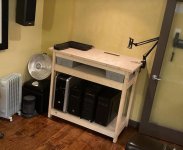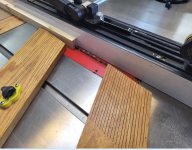NewWoodWorkerVA
Member
- Joined
- Jul 30, 2023
- Messages
- 22
I am going to build some shop furniture with 2 x 4 construction lumber. I want to clean up the edges. I can use my tablesaw but that won’t give me the straight edge that I want to attach the table top surface to. Has anybody ever edge jointed a 2 x 4 with a track saw? I’d like to use my track, saw to get one clean edge, and then use my table saw for the other edge. I’m less concerned about the faces.
Thanks
Thanks



